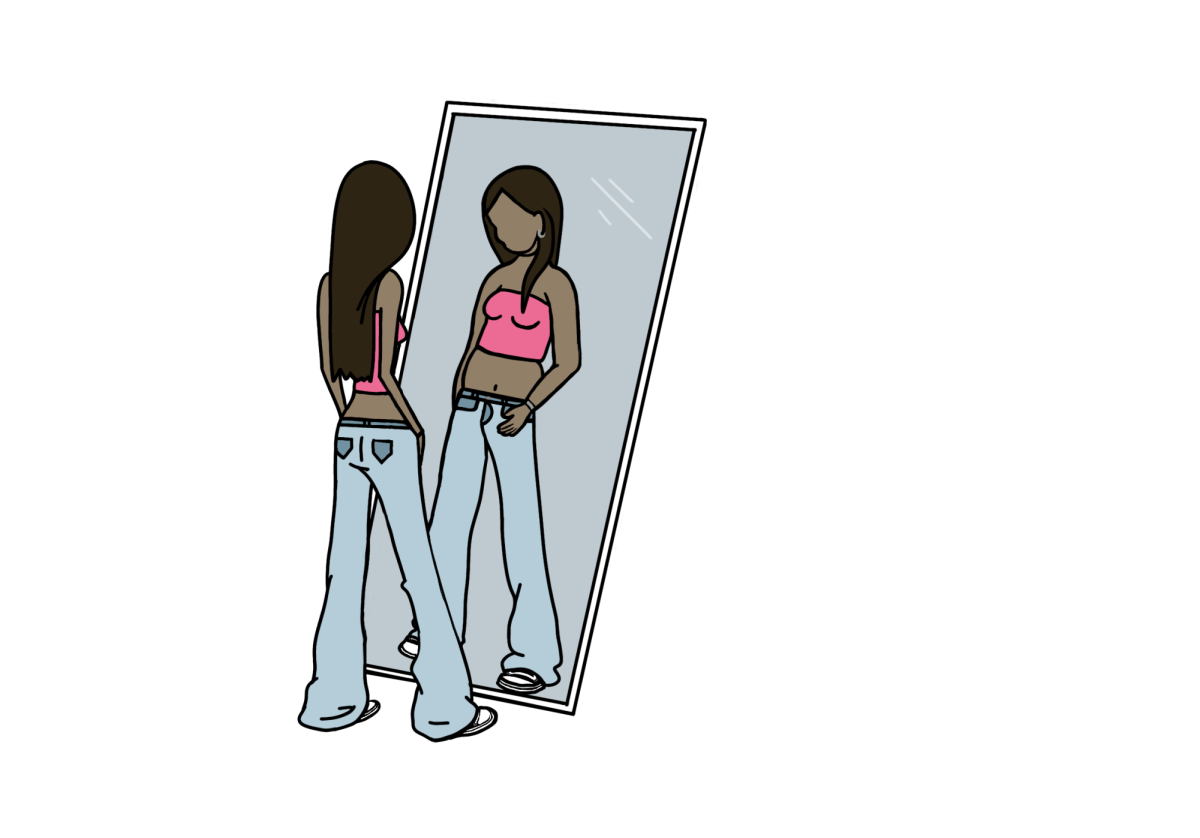Mayo Clinic defines Body Dysmorphia Disorder (BDD) as a “mental health condition in which an individual cannot stop thinking about one or more perceived defects or flaws in their appearance, a flaw that is minor or cannot be seen by outsiders. This insecurity is so bad that they may feel embarrassed, ashamed and anxious, so much so that they may avoid social situations.”
Body Dysmorphia Disorder or BDD has become too prevalent in this current society. While it can affect anyone, BDD is most common within the teenage and young adult groups. The condition mostly develops around age 13 to 14 for about two-thirds of the community. Meaning, this condition is one that heavily affects high schoolers.
With students most commonly afflicted by this unforgiving disorder, it can cause disruptions in their education. With constant thoughts of appearance, it can be hard for the student to focus on their school work causing the individual to fall behind. Not only in schoolwork, but BDD can also cause deficits in a student’s ability to socialize. Some cases are bad enough to where the student will not even attend school due to how deep the insecurity lies. Mental Health America states that 18% of students living with BDD dropped out due to the severity of their symptoms.
BDD targets high school students for a number of reasons. Most are due to bullying and constant scrutiny teenagers face from each other. Common forms of bullying, including body shaming, fat shaming and slut shaming, have unfortunately been widespread occurrences for teens that do not fit inside the so-called “blueprint” for the ideal body. These actions have proven to be extremely harmful, enough to cause a case of BDD. To see a decrease in BDD cases, something must be done to combat bullying in schools.
Human bodies are held to unrealistic circumstances. This idea is the main point of BDD and the causes of it. In society, if a male is too skinny or too large, they need to go to the gym and get buff. If they do not fit the outline of a hypermasculine football player, they are seen as different, and often treated as such. This has caused toxicity in the male’s perception of their body as if there was not already enough concerning their mental health. Gym culture plays a large part in this issue, as teenage boys are now being compared to thirty-year-old bodybuilders and are expected to look as such.
This issue is one that sadly hits females as well and in a contradictory way. If a female is too large, she is seen as fat and too curvy. However, if a female is too skinny, she needs curves because no man wants a woman with smaller breasts or glutes, but she must stay skinny in her waist. These are a few of the unrealistic standards men have set against women and how they think their bodies should look. Like men, girls as young as middle schoolers are being compared to supermodels with multiple plastic surgeries, and are continually bullied if they do not fit the blueprint of an Instagram model. This is a direct cause of BDD.
Social media has caused detrimental harm to youth and their perception of themselves. Social media is filled with edited photos, plastic surgeries, filters, unrealistic food plans, etc. These issues can all affect a person’s body image and motivate them to try to reach unattainable goals. Both young men and women are constantly compared to these falsified bodies. These comparisons are dangerous as they can lead to BDD and different kinds of eating disorders.
BDD is a large issue, and it needs to be combatted. First, schools need to take bullying to a more serious level. Many schools say that they do not condone bullying. However, when a student does come to them about bullying, nothing is done. This is a problem as school administrators are not doing everything in their power to protect their students from mental detriment, and if bad enough, suicide. BDD is a gateway to self-hatred, later on making that individual develop suicidal tendencies. It is time to start at the root of these issues; conquering bullying and falsified bodies portrayed on social media. With this, a decline could be seen in those with BDD, and an overall happier generation of youth.



